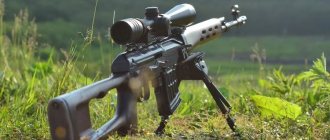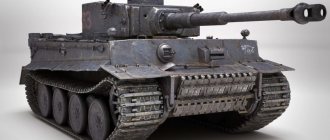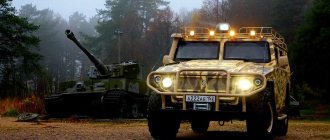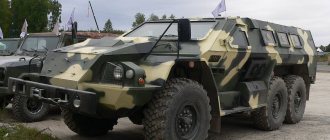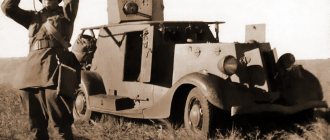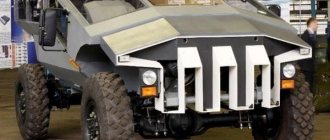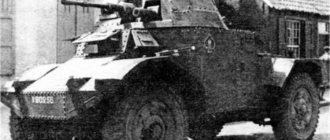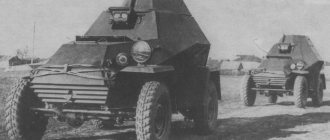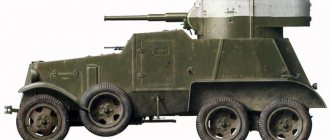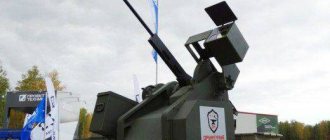One of the serial modifications of the Russian armored car GAZ-2330 "Tiger" For quite a long time, the Russian army did not use armored vehicles, relying on armored personnel carriers, infantry fighting vehicles and armored vehicles. Meanwhile, the experience gained by the United States in combat operations using the well-known military all-terrain vehicle HMMWV (Humvee) indicated that such vehicles could bring considerable benefits. They are highly mobile, relatively cheap and versatile. All this prompted Russian designers to think about creating their own analogues of the Humvee. And yet it is difficult to say how quickly the army would have received such vehicles if not for the accident associated with the failed contract between the UAE and the GAZ plant.
History of the development of the GAZ-2330 armored vehicle
At the beginning of 1999, representatives of the Bin Jabr Group, registered in the United Arab Emirates, contacted the management of the Gorky Automobile Plant (GAZ). They offered to finance a project to create a new armored car for the UAE army. It was assumed that this vehicle could replace the American Humvee (HMMWV), which turned out to be prohibitively expensive to operate.
From the very beginning, it was clear that Bin Jabr Group was not the final customer of the armored car. This company was a kind of “transfer link” for a much larger company - King Abdullah II Design & Development Boreau (KADDB), known, in particular, as the largest creator of military equipment in the region - both wheeled and tracked. Thus, the proposal seemed very serious.
HMMWV armored vehicle with a heavy machine gun in the top hatch
The basic requirements for a new car at that time were as follows:
- Reliable operation in climatic conditions typical of the Arabian Peninsula (air temperature up to +50 degrees Celsius);
- Simplicity of the main units;
- The depth of the water obstacle to be waded is up to 1.2 meters;
- Possibility of entering (and exiting) the slope at an angle of 52 degrees;
- The level of comfort for the crew should correspond to the average passenger car.
The GAZ plant had considerable experience in creating army passenger all-terrain vehicles and armored personnel carriers, which allowed it to cope with the design of a new vehicle and the production of its first few copies in a very short time. Already in 2001 in Abu Dhabi, at the IDEX arms exhibition, three armored vehicles designated Tiger were demonstrated.
Further, some kind of “murky” and not very clear story happened: all three experimental vehicles remained in the UAE along with a set of technical documentation, while Arab customers responded quite complimentarily to the Tiger. For some reason, the contract with the subsidiary, which was developing the project, was broken. Previously planned joint tests never began.
The management of the GAZ plant, seeing this situation, decided to use the almost finished project in their own interests, offering a new car to the ministries of internal affairs and defense. There were no objections from the previous customer on this matter, and a few years later the UAE acquired the Nimr armored vehicle (translated from Arabic as “Tiger”).
The Arab “brother” of the GAZ-2330 – the Nimr armored car at the IDEX-2019 exhibition
In 2002, the Gorky Automobile Plant produced three different versions of the car, then designated GAZ-2975. Only one of them, a three-door one, was armored. The other two had a simpler tented hull. At the same time, the appearance of the car has changed somewhat compared to the “Arab” version. The first “testers” of the cars were members of the Moscow special rapid reaction squad. The results obtained were positively assessed by the Ministry of Internal Affairs, which wished to purchase a whole batch of vehicles.
In 2005, serial production of “Tigers” began, but not at GAZ, but at the Arzamas Machine-Building Plant. Soon the Tiger armored car began to be supplied not only to units of the Ministry of Internal Affairs, but also to the army. In 2008, they were used during the “five-day war” in South Ossetia and Georgia, and in 2014, these vehicles were spotted in Crimea, where they were involved in the blockade of Ukrainian military units.
Over the years since the appearance of the first Tiger models, many modifications have been developed. The characteristics of armor and mine protection were enhanced, new types of weapons were installed, and specialized versions were created. In 2022, another modification of this vehicle, the Tiger-M, was tested in Syria, which in the coming years will apparently become the main one in the army.
About armored vehicles in other countries
NATO member states take part in various military conflicts that arise again and again. In connection with this circumstance, when designing new models of army equipment, developers have to pay a lot of attention to the level of protection of soldiers. In 2009, the United States military command placed an order from Oshkosh Truck for 1 thousand M-ATV armored vehicles. This 14.5-ton armored car, the carrying capacity of which is 1900 kg, is capable of speeds of up to 105 km/h. This transport unit is equipped with a turbodiesel engine with a capacity of 370 horsepower.
In addition to this order, the United States Department of Defense announced a tender for the creation of a domestically produced armored vehicle capable of replacing the already outdated Hummer. In Germany, security forces have ATF Dingo armored cars with a V-shaped bottom, which effectively provides mine protection, and LAPV Enok, which have excellent speed characteristics. Among the military equipment of this class from the countries of the former Soviet Union, the most famous are the Ukrainian-made Dozor-B and KrAZ MPV TC vehicles. The design of the Russian Tiger armored car began in the late 90s. The work was carried out taking into account all the advantages and disadvantages inherent in foreign technology. The Tiger armored car (photo of the army vehicle in the article) is listed in the technical documentation as STS GAZ-2330.
The main purpose
"Tiger" for the Russian Ministry of Internal Affairs.
The photo was taken before the militia was renamed the police. The GAZ 2330 Tiger armored car is used to solve the following tasks:
- Safe transportation of military personnel through territory where various sabotage, irregular or terrorist formations may occur;
- Delivery of soldiers and cargo to the operational rear and front-line zones in the context of a “conventional” war;
- Evacuation of the wounded from the battlefield;
- Fighting enemy armored vehicles or aircraft (provided that they are equipped with appropriate weapons);
- Fire support for attacking or defending units;
- Conventional, chemical and radiological reconnaissance;
- Delivery of special police forces to the site of operations to neutralize or apprehend especially dangerous criminals.
In general, in terms of its functions, the Tiger is quite close to an armored personnel carrier.
About current realities
Over time, the appearance of the army and military strategy change. Now industrial capabilities are at a completely different level and allow the development and production of new and improved military equipment. Today, armored vehicles are reliably protected vehicles that can increase the mobility of both army and special forces units. Reconnaissance, raids behind enemy lines, delivery of personnel to the site of combat operations and fire support have become the main areas of use of armored vehicles in the army. Due to the fact that cramped urban conditions are not an obstacle for such cars, they are quite popular among special police forces.
Car design
The main load-bearing element of the GAZ-2330 all-terrain vehicle is a rigid welded frame. All other components and assemblies are hung on it. The car body is all-metal, welded, armored. The thickness of the metal depends on the modification and is one of the factors determining the protection class. Layout: bonnet station wagon, in the rear there are doors that open outward. The cabin maintains a constant air temperature, which is ensured by climate control systems.
The interior of one of the civilian versions of the Tiger
Power unit
One of the following engines can be installed on the Tiger armored car:
- Cummins B180-20. Volume – 5.883 liters, power – 180 horsepower. Torque – 650 Nm at 2500 rpm;
- Cummins B205-20. A power of 205 horsepower was achieved while maintaining the same cylinder volume. Torque – up to 750 Nm at 1900 rpm;
- Cummins B215-20. Power increased to 215 horsepower. At 1500 rpm, the engine generates a torque of 700 Nm;
- YaMZ-5347-10. This is a multi-fuel engine - it can be filled with both diesel fuel and gasoline. Power is 215 horsepower, torque is 735 Nm at a speed of 1300 to 1600 rpm.
The prototype cars of the first series were equipped with a GAZ-562 engine with a power of 150 horsepower. In addition, a version of the car equipped with a 420 hp engine was demonstrated to Russian Prime Minister Medvedev. This car did not go into production.
All engine options are equipped with a pre-heater and an electric inlet air heater. These devices ensure reliable engine starting in any climatic conditions.
Transmission
The Tiger SUV can be equipped with an automatic transmission, but only civilian versions of the car have this feature. Military versions are equipped with a GAZ-2330-1700010 manual transmission with six gears. There is also a transfer case that allows you to distribute the forces from the engine between the axles of the machine.
Engine YaMZ-5347-10 installed on GAZ-2330
Using a special lever, a lower gear can be engaged (1: 4.5). At the same time, a torque of 2000 Nm is created on the wheels, which significantly increases the maneuverability of a heavy vehicle, giving it the ability to drive, for example, through a one and a half meter layer of recently fallen snow.
To ensure that the front and rear wheels rotate at the same speed, the driver can turn on the center differential lock by pressing one of the buttons on the panel.
Suspension
GAZ-2330 is equipped with a torsion bar, fully independent suspension. Many elements of its design were developed taking into account the design of similar components of the BTR-80 armored personnel carrier, which made it possible to increase the stability and “survivability” of the most important parts. The front wheels are equipped with a device that provides lateral stability while driving, and each of the rear wheels is equipped with two hydraulic shock absorbers.
In addition, the car is equipped with wheel gears, which increased the ground clearance, thereby further improving cross-country ability.
Steering
The “screw-ball nut” steering type is used. Since the car has more than impressive mass, a hydraulic booster is installed. Thanks to this device, when driving the Tiger is not much different from a regular passenger car.
How did it all begin?
In 1999, King Abdullah II of Jordan began to become concerned about the state of the country's armed forces. Soon, in order to modernize them, a special company Design and Development Bureau was created on his initiative. Jordanian military experts believed that the royal army needs a special SUV, an alternative version of the American Hummer. The Arabs were not happy with the armored vehicles produced in the United States because they were very expensive and very expensive to maintain.
The creation of a new armored car was entrusted to the company Bin Jabr Croup Ltd, which soon transferred the order to Russian designers from the Gorky Machine-Building Plant. The Russian side's task was to design three prototypes of an armored car with different body options. The equipment was developed exclusively for the needs of the army; the creation of a civilian version was not envisaged. Since American Hummers often broke down, the new armored vehicles had to be easy to manufacture and reliable enough to operate in harsh desert conditions.
Specifications
Overcoming a water obstacle on the GAZ-2330
The GAZ-2330 was produced in different versions, differing in armor, power plant power and weapons.
Performance characteristics are given for the Tiger-M modification VPK-233114/SPM-2M:
| Full mass | 7.8 tons |
| Curb weight | 6.6 tons |
| Load capacity | Up to 1.4 tons + trailer weighing up to 2.5 tons |
| Maximum off-road speed | There are no exact data, presumably up to 80 km/h |
| Maximum highway speed | 125 km/h (according to other information, up to 140 km/h) |
| Power reserve | 1000 kilometers |
| Fording depth | 1.2 m |
| Allowable elevation angle | 30 degrees |
| Width of the ditch to be overcome | 0.5 m |
| Height of obstacles to be overcome | Up to 40 cm |
| Clearance | 400 mm |
| Wheelbase width | 3 300 mm |
| Body height (without weapons) | 2 300 mm |
| Vehicle length | From 5650 to 5700 mm |
| Vehicle width | From 2300 to 2400 mm |
The ballistic armor of the front part of the vehicle meets level 3 (class 5 according to GOST R50963-96), and mine protection – level 2A according to the STANAG 4569 classification. This means, in particular, that the SUV is capable of withstanding the explosion of a device equivalent in strength to six kilograms of TNT at condition of hitting it with a wheel.
About design features
Design work on the Russian armored car "Tiger" was carried out taking into account the wishes of intelligence officers. According to one version, the developers of the Arzamas Machine-Building Plant used components and assemblies of the GAZ-66. However, this judgment is refuted by experts, since both cars only have a common wheel arrangement. The Tiger armored vehicle (a photo of the transport unit is presented in the article) has a rigid frame with independent torsion bar suspension, for which hydraulic shock absorbers are provided. A vehicle with an armored three-door body that can carry up to nine soldiers. In addition, the body is adapted for transporting various cargoes, the total weight of which does not exceed 1.2 tons.
Advantages and disadvantages
GAZ-2330 has the following advantages:
- High cross-country ability;
- Comfortable (by military standards) travel conditions;
- High level of variability of the vehicle - it can be equipped with a wide variety of weapons and special devices;
- Possibility of using different types of fuel.
In general, the Tiger is a completely worthy competitor for almost any Western “opponent,” which is proven by the success of deliveries of these vehicles abroad.
Chinese version of "Tiger". Manufactured under license
However, it also has disadvantages:
- Insufficient level of protection, especially against mine weapons. This problem is being solved, but there is still a lag behind foreign analogues, including the Arab Nimr, although it is designed on the basis of the GAZ-2330;
- The body is made all-welded, while the most modern versions of armored vehicles have a modular design;
- The purchase price is too high, which does not allow buying cars in large quantities.
The experience of using Tigers in combat conditions is generally positive, however, they have so far almost never encountered strong opposition. Perhaps some similar episodes happened in Syria, but there is little information about them.
About the chassis
In an effort to ensure high speed of movement of the armored vehicle on highways, asphalt roads and off-road, the developers used new torsion bars, a durable linkage suspension and energy-intensive shock absorbers in the design of the vehicle. According to experts, due to these elements, the Tiger is equally stable in any conditions. Thanks to the presence of a modified suspension, permanent all-wheel drive, high ground clearance and a well-designed wheelbase, the armored vehicle is successfully operated in areas with damp and swampy soils. On the highway, the equipment moves at a speed of 150 km/h, in off-road conditions - 75 km/h.
Equipment and options
Tiger vehicles are equipped with an electrically driven winch, special seats to prevent injury to the crew in the event of a mine explosion, an automatic system designed to regulate air pressure in tires, a filter-ventilation unit and fire-fighting equipment.
The equipment package may include other devices, depending on the intended use of the machine.
All GAZ-2330 cars can be divided into three main types:
- Unarmored vehicles;
- Multi-purpose armored vehicles;
- Specialized machines.
Unarmored civilian version of the Tiger vehicle
The following modifications of unarmored vehicles were produced:
- GAZ-23304. The body is a one-volume station wagon. Number of doors – five;
- GAZ-233001. Civilian "Tiger", sold in small quantities;
- GAZ-233011 and 233012 - pickups with four or two doors and a cargo platform;
- GAZ-233013. The body is station wagon, the number of doors is three. There are options with a two-volume interior;
- GAZ-3121 is another civilian version, also known as Tiger-2. It was distinguished by slightly reduced fuel consumption and lower weight (3.5 tons);
- GAZ-SP46 is a car for parades. The body is a “convertible”, there is a hard roof that can be removed or installed if necessary. There is a handrail in the cabin that you can hold on to while riding while standing. The car is equipped with an automatic transmission, the weight is reduced and is 4.75 tons.
Modification for special forces ASN 233115. The vehicle's armament is clearly visible - a machine gun and an automatic grenade launcher.
Multi-purpose armored "Tigers" are represented by the following modifications:
- GAZ-233034 (SPM-1) - used by operational officers and special units of the Russian Ministry of Internal Affairs. Involved in participation in operations against terrorists, used by border guards. Ballistic protection class – 3;
- GAZ-233014 (STS) - the armored body of this army vehicle is additionally lined with a special coating that retains fragments of various ammunition. The number of doors is three. In 2014, it was these cars that blocked Ukrainian military units in Crimea;
- GAZ-233036 (SPM-2). Car for the Ministry of Internal Affairs of the Russian Federation. It differs from the SPM-1 by the presence of two hatches in the roof and loopholes in the armored glass. The level of ballistic protection according to the domestic standard is –5. On the basis of this variant, two command and staff vehicles were created - APE-MB and R-145BMA;
- SBM VPK-233136. An improved version of the SPM-2 with a Russian YaMZ engine;
- VPK-233114 (“Tiger-M”). The serial version is supplied to both the Ministry of Internal Affairs and army units. Equipped with a filter-ventilation unit, there is a square hinged hatch in the roof. A new version of the YaMZ engine was installed;
- ASN 233115 (“Tiger-M” SPN). A rotating installation with a machine gun and an automatic grenade launcher is mounted in the top hatch. This option is intended for special forces soldiers.
Special car "Abaim-Abanat".
On the roof there is a folded assault ladder. Among the specialized modifications of the Tiger armored car, we can distinguish the following:
- "Abaim-Abanat". It is a variant of the GAZ-233034 model, equipped with a special controlled ladder, with the help of which special forces soldiers of the Ministry of Internal Affairs can penetrate the second or third floor of the building during an assault;
- SBRM. A vehicle equipped with equipment to detect various equipment (including drones and helicopters) and enemy personnel. The collected data is transferred to an electronic map, the coordinates of the targets are determined using the GLONASS system;
- P-265. Mobile field radio station;
- MZ-304 "Highlander". A variant of the Tiger-M armored vehicle with an integrated semi-automatic 120 mm mortar launcher;
- MK-BLA-01. Used together with the Lastochka drone;
- "Leer-2". It is a “Tiger-M” with electronic warfare equipment;
- RHM-VV. A vehicle for performing chemical, biological and radiation reconnaissance. Operated by the Russian Guard.
In addition, there are ambulance "Tigers", as well as vehicles equipped with radar stations for reconnaissance and artillery fire control.
The ABS 23316 deserves special mention. This modification of the armored vehicle can be armed with a Kornet-D anti-tank missile launcher or a Gibka anti-aircraft missile system. In the latter case, the ammunition load may include Igla-S missiles or the newer Verba. The altitude of hitting targets is up to 3500 meters.
Armored vehicle ABSh 23316 with installation of Kornet-D anti-tank missiles on the roof
For direct support of troops, the Tiger vehicle can be used in the BRShM modification. Its main difference is an uninhabited remote-controlled module armed with a machine gun and a 30 mm automatic cannon.
About the power plant
Initially, the Russian armored car used a turbocharged Cammins B205 engine produced in the United States. This diesel engine is characterized by high dynamic qualities. The power of the power unit is 210 horsepower. Recently, American diesel engines have been replaced by similar Russian YaMZ-534, for which turbocharging is provided. These 6-cylinder units fully comply with the Euro-3 eco-standard and, despite their compactness, have more power than their imported counterparts. The Russian engine is capable of developing power up to 235 hp. With.
About military equipment from the Russian
The Tiger armored car became the basis for the creation of various prefabricated models. The sprues from which the car is assembled are contained in a colorful box. Due to the fact that the participation of this armored vehicle ensured the legality of the referendum and counteraction to aggressive acts on the part of Ukrainian nationalists and extremist Tatars, the box depicts strategically important objects of Crimea.
For example, on the left side is the airport terminal in the city of Simferopol. The scale of the Russian armored car "Tiger" "Zvezda" is 1 to 35. The manufacturer used gray plastic to make the sprues, and black dense rubber to imitate the tires. The glass elements of the model are represented by transparent parts. Rear view mirrors – with mirror film. Judging by numerous consumer reviews, this product looks very naturalistic. The strength of all plastic elements is also appreciated.
Yanqin "Protector" (燕京卫士) [36]
The front seats are separated from each other by a casing protruding from below into the interior of the gearbox and transfer case to provide high ground clearance, which can be used as a table. Mobile protected multifunctional ballistic radar to provide data to a unit of cannon artillery and multiple launch rocket systems 17.
